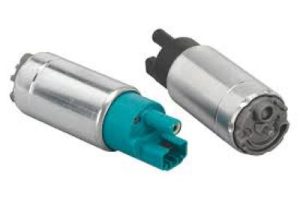Using to small of a gauge wire and incorrect wiring are other major no-nos during fuel pump installations. A fuel pump might draw anywhere from 10 to 15 amps, and using a lighter-than-recommended-gauge (say you have a 14 gauge wire versus a recommended 12) can mean that you have some voltage drop. This has an adverse effect on the pump's effectiveness, impoverished fuel pressure and naturally ended up impacting engine efficiency. Another common problem is the failure to install an appropriate relay system. A fuel pump relay capable of handling up to 30 or even up to 40 amps will provide plenty of current for the pump and not cause an electrical overload that could potentially damage the pump, wiring or other related components.
Misdirected GroundingAn additional fault is misdirected grounding, which can lead in the intermittent compliance of the pump or not at all. Poor or loose ground connection yields a noisy electrical system and a variable supply of voltage which reduces the life of the pump. Auto repairs suggest connecting the ground wire to the brush at an area of free on and clean from rust_Read more about Auto repairs » In most cases, fuel pump fails within 12 months because of incorrect grounding or wirings.
Not replacing the fuel filter when installing the pump is a mistake that can drop pump effectiveness by as high as 20%. Clogged filters can cause the pump to work even harder, which could lead to overheating. The fact of the matter is that fuel filters need to be replaced every 30,000 miles in general to maintain proper fuel flow but too many installers skip this important step which results in diminished pump life.
Vapor lock and cavitation are among the potential consequences of improper fuel pump positioning or orientation, especially with inline pumps. Inline pumps: For these the best location is as close to the fuel tank as possible where they are used to avoid risk of vaporizations, which forces within a breather pipe that causes fluctuations if placed nearby. This choice can result in engine stalls, especially on a hot day when vapor lock occurs. This will minimize the issue as you follow the manufacturer guidelines for installation placement.

If one of these hoses are in the picture make sure you check your fuel pressure after the installation. Fuel pumps are designed to run at a given pressure range which is generally between 40 and 70 psi. If the regulator drops outside of this range the turbo simply will not boost as it should so check with a gauge after installation, many people fail to do this and are left wondering why their car won't perform. Specifically, Kemso provides the exact specification required for their high-flow fuel pumps — which is extremely important to any installer who needs to know the pressure range they are going to be sending. If the pressure is too low, it can cause engine misfires or hesitation on acceleration.
For additional suggestions on the way to avoid any sort of fuel pump replacement mistake, in addition to moral high quality choices dont wait to look at Fuel Pump with regard to more information as well as put into action tend to be weblog towards the essay or dissertation — Kemso.